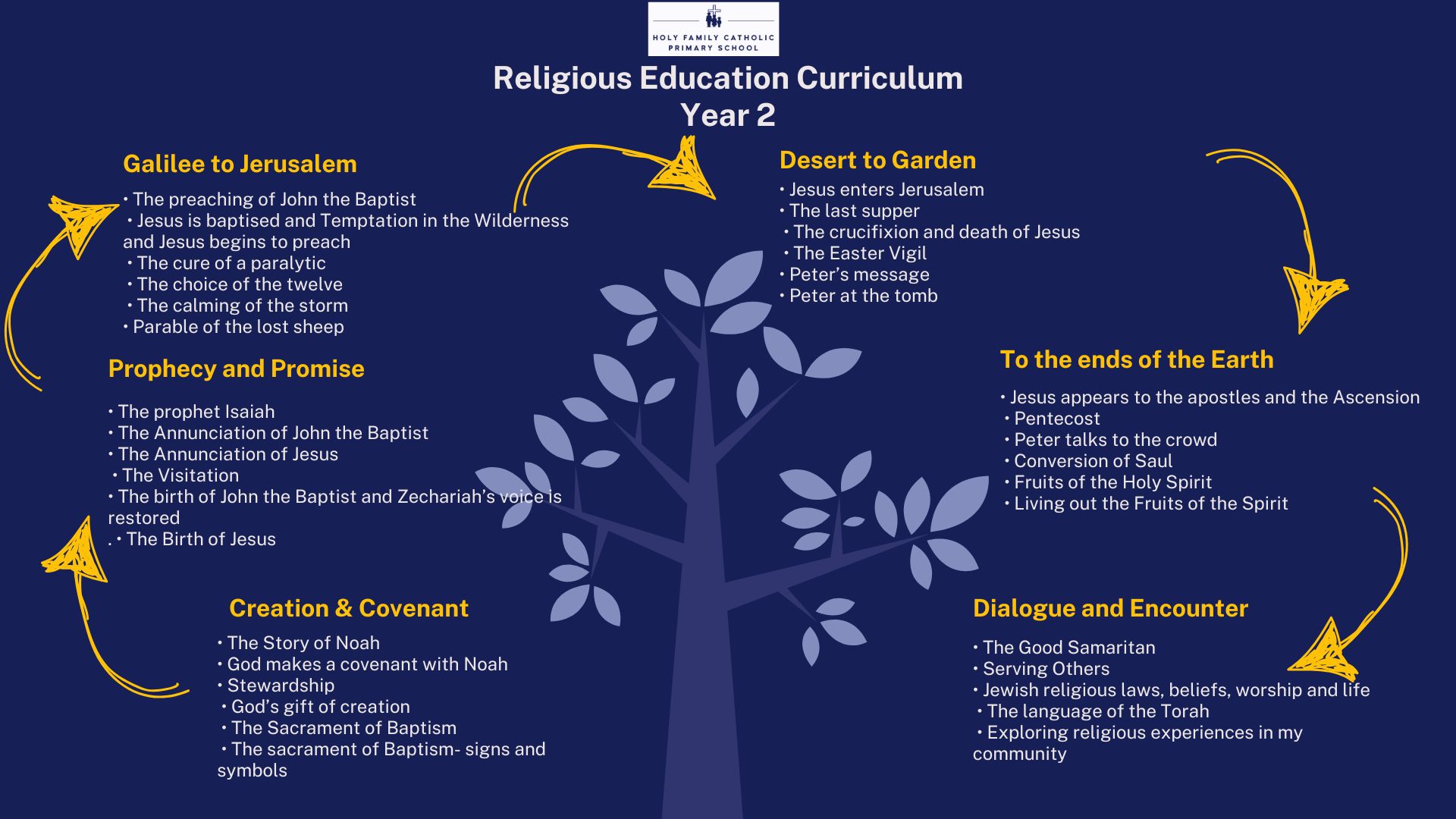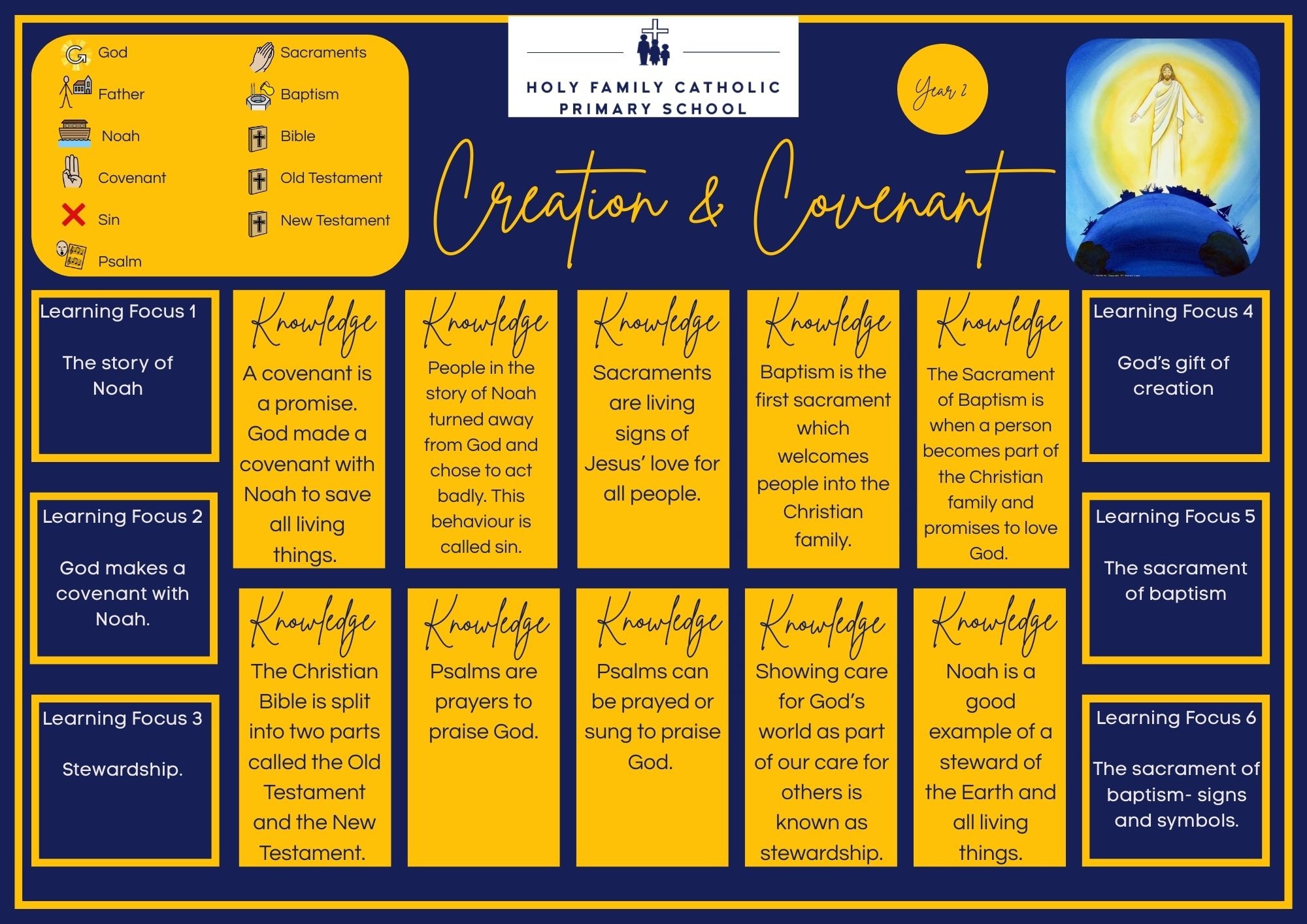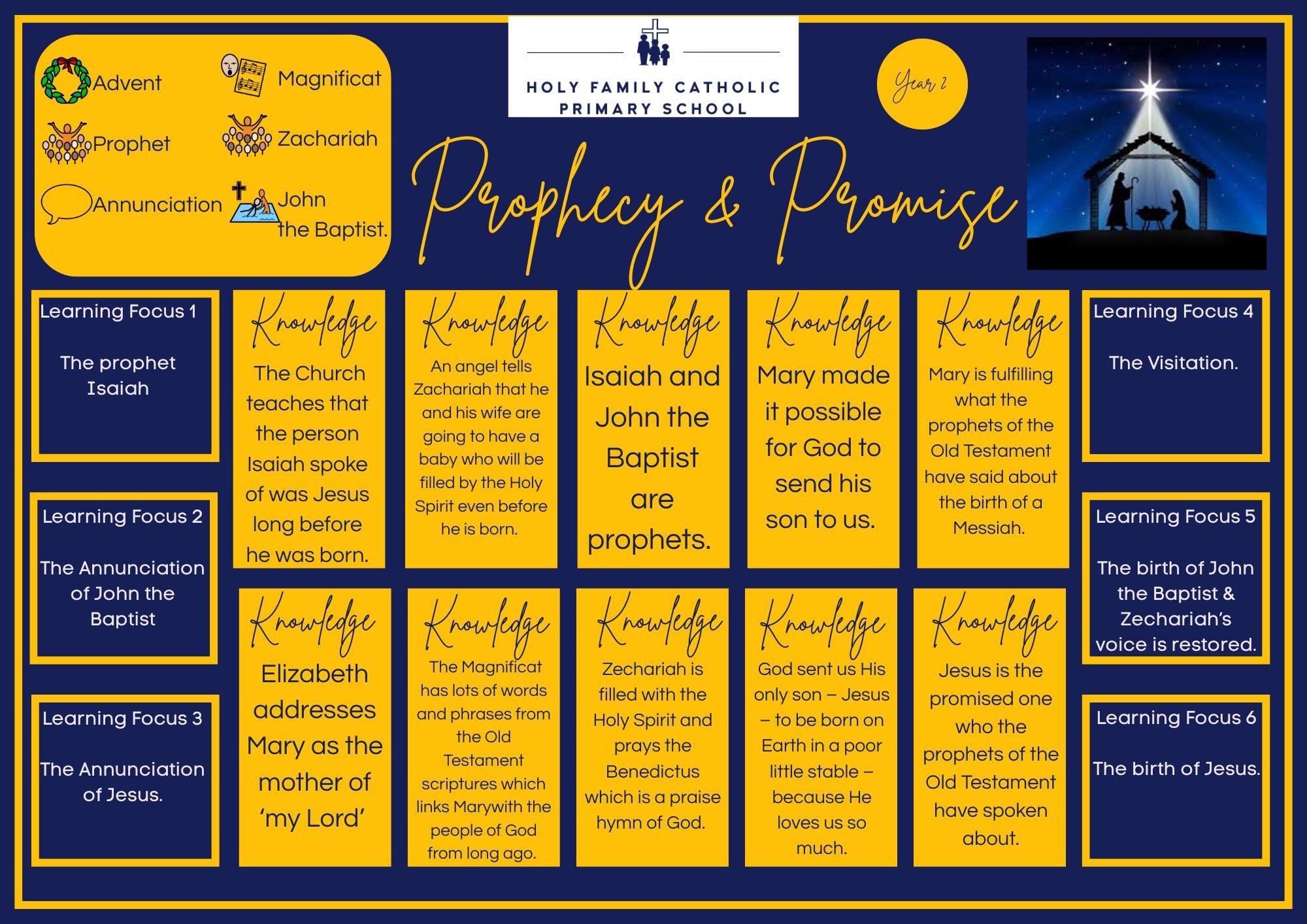Religious Education

In line with our fellow Diocesan schools, we follow the Diocesan lesson plans based on the new RED. This curriculum seeks to present the teaching of religious education in a sequential and progressive form. The framework has four structural elements:
- Knowledge lenses which indicate what should be known by the end of each age phase. These are split into hear, believe, live and celebrate.
- The ‘ways of knowing’ are the skills which develop as the children progress through their curriculum journey. These are split into understand, discern and respond.
- Expected outcomes are set for each age phase and indicate what pupils are expected to know, remember and be able to do.
- Curriculum branches are the way the programme of study presents its model curriculum. There are six half term branches for each half term which are the same in each year group.
The overarching theme of this year is baptism.
Baptism is the meeting point where people are reborn to a new life in Christ and become part of the Christian community. In the story of Noah, Creation is reborn from the waters of the flood. Learners will encounter John the Baptist and journey through St Luke’s gospel as they come to know the signs in the gospel that Jesus is the Messiah spoken of by the prophets.
They will consider how the power of the Holy Spirit transforms the lives of people in the writings of St Luke, for example, Mary, Elizabeth, and Paul, and consider how a life in Jesus calls people to be good neighbours. Learners will also begin to think about good and bad choices (sin) and why the Sacrament of Reconciliation is needed. They are not expected to know all these connections, but we help them make connections between different branches to ensure that links between branches exist across each year as well as sequentially as they revisit a branch the following year.

Knowledge Organisers for each branch can be found below.



